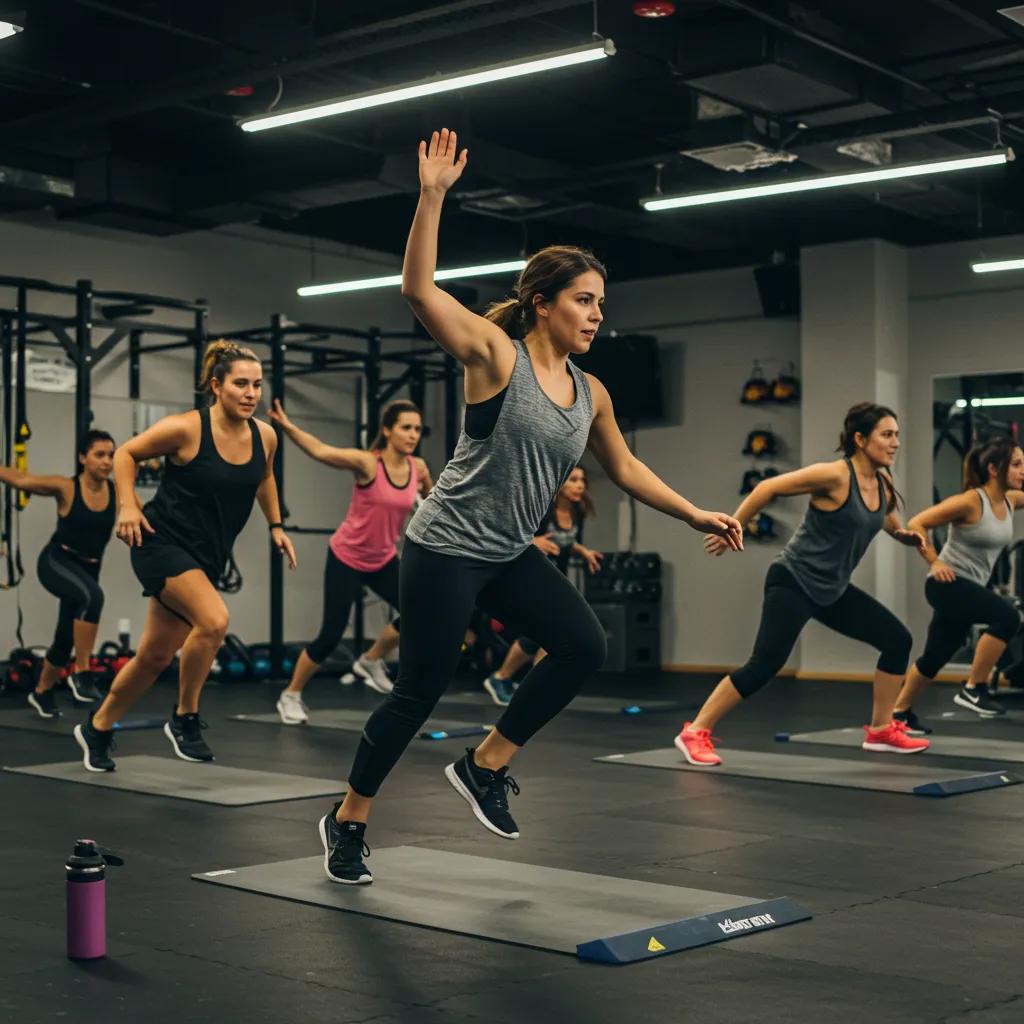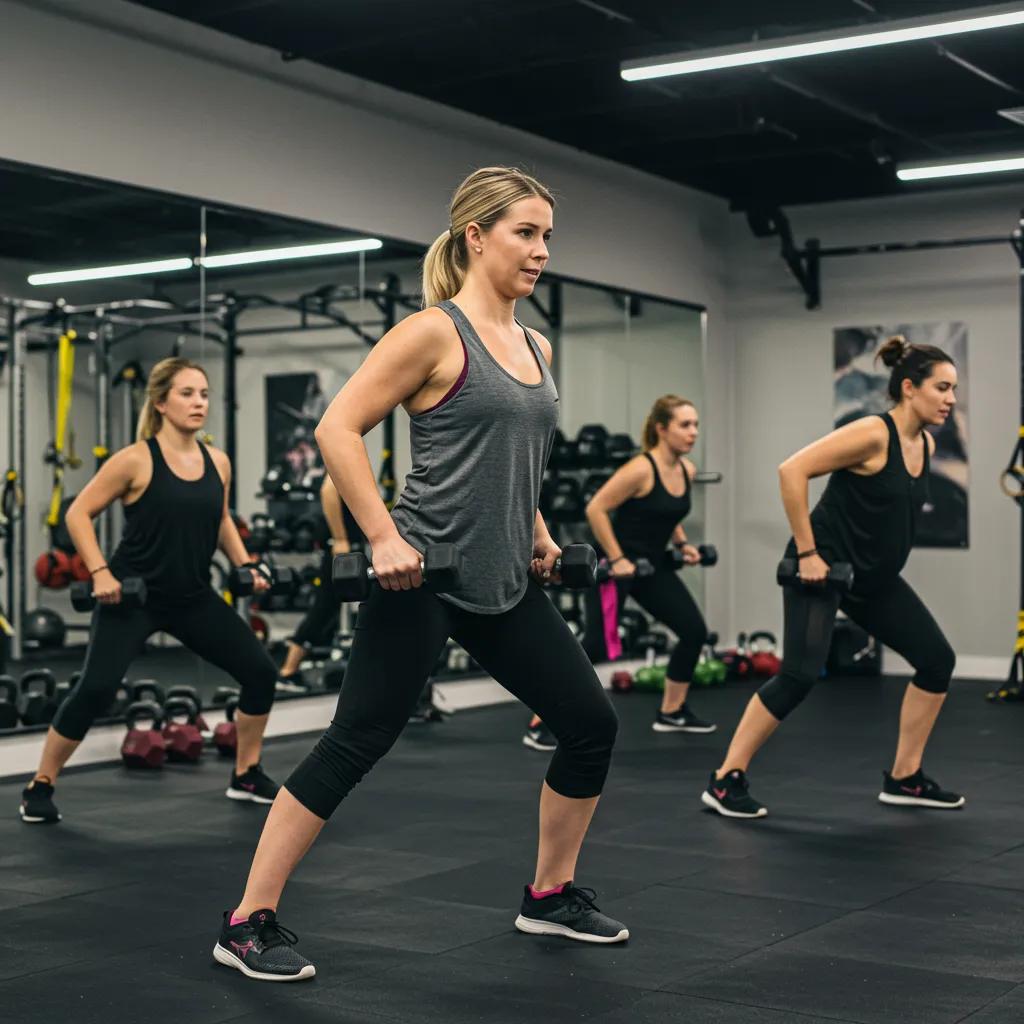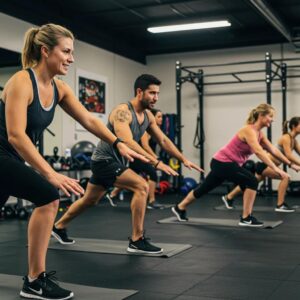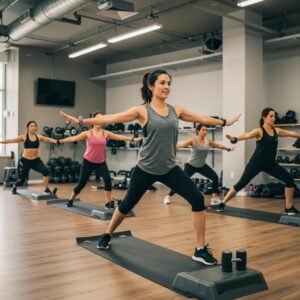
Workout classes in West Windsor combine structured group sessions and personalized training to help residents build functional strength and lasting confidence. This guide explains what local workout classes look like, how different formats drive strength and psychological gains, and practical steps to pick the right class or trainer in West Windsor. Many people struggle to find training that fits busy schedules while delivering measurable progress; targeted group classes and personal training close that gap by using progressive overload, coached technique, and community accountability.
Read on to discover the major class types available, how each improves strength and confidence, criteria for choosing trainers and classes, typical costs and schedules, and the community successes that keep people motivated. Throughout the article you’ll find concise comparisons, quick checklists, and EAV-style tables to help you compare HIIT classes West Windsor and strength training classes West Windsor alongside small group personal training in West Windsor. Use these insights to plan a trial class, compare schedules, and start a training rhythm that builds both physical capacity and self-assurance.
What Types of Workout Classes Are Available in West Windsor?
Workout classes in West Windsor span high-intensity group formats to low-impact mobility sessions, each delivering different strength and confidence outcomes. Classes range from HIIT classes West Windsor that prioritize cardiovascular overload to strength training classes West Windsor that focus on progressive resistance and technique. Understanding class focus helps you choose sessions that match your goals and schedule. Below is a concise list of common class types and one-line benefits to aid quick selection.
Common local class types and primary benefits:
- HIIT classes West Windsor deliver fast cardiovascular and metabolic improvements while building movement resilience.
- Yoga classes West Windsor improve flexibility, balance, and stress management for steadier confidence.
- Strength training classes West Windsor target muscle growth and functional power for daily activities.
These class types map to distinct training goals and training mechanisms, so reviewing class descriptions and schedules helps you align a routine with measurable strength gains. After exploring modalities, consider viewing local class schedules or booking a trial to experience class format and instructor style firsthand.
Different class modalities compared by focus and typical benefits:
| Class Type | Class Focus | Typical Benefits |
|---|---|---|
| HIIT | Cardio intervals + bodyweight/weights | Improved endurance and metabolic conditioning |
| Strength Training | Barbell, dumbbell, resistance | Increased muscle strength and functional power |
| Yoga/Pilates | Flexibility, mobility, breath | Better range of motion and stress reduction |
| Small Group Personal Training | Coach-led small cohorts | Personalized load with group motivation |
| Bootcamp/Barre | Mixed conditioning or targeted tone | Full-body conditioning and muscular endurance |
Which Group Fitness Classes Build Strength and Confidence?

Group fitness classes that build strength and confidence combine progressive resistance with skill practice and measurable benchmarks. Strength-focused circuits, barbell-based classes, and structured bootcamps use progressive overload and coach feedback to drive improvements in lifts and functional movements. Group settings also offer social reinforcement; seeing peers progress and mastering new skills reinforces self-efficacy and motivation. For measurable results, track simple performance markers like increases in weight, reps, or improved form on key movements to quantify strength gains and maintain confidence.
The principle of gradually increasing exercise demands is crucial for continuous adaptation and improvement in fitness.
How Does Small Group Personal Training Enhance Fitness Results?
Small group personal training in West Windsor blends individualized programming with group energy to accelerate progress. Trainers keep class sizes small so they can correct form and scale loads while still providing peer-driven accountability. This format often reduces per-session cost versus one-on-one training while preserving personalization through modifications and progressions. The result is faster technical improvement, consistent attendance, and a supportive environment that boosts confidence through shared goals.
Small-group training offers a compelling solution for individuals seeking personal training guidance without the high cost of one-on-one sessions.
What Are the Benefits of One-on-One Personal Training in West Windsor?

One-on-one personal training delivers fully customized programs, focused technique coaching, and rapid troubleshooting for injuries or movement limitations. A dedicated trainer prescribes precise progressions based on testing and adjusts programming each session to sustain safe overload and measurable gains. This high-touch approach suits clients with specific performance goals or rehab needs and creates a clear accountability loop that reinforces confidence through consistent, tracked improvements.
How Can Workout Classes in West Windsor Improve Your Strength and Confidence?
Workout classes improve strength and confidence by combining physiological adaptations with psychological mechanisms that support sustained behavior change. Physically, classes apply progressive overload and neuromuscular adaptation to increase force production and endurance.
Psychologically, mastering skills, receiving feedback, and belonging to a training community build self-efficacy and body-confidence. Expect incremental performance markers—higher loads, more reps, cleaner technique—and parallel gains in mood and perceived competence over weeks of consistent training.
Practical benefits broken down by mechanism and outcome:
- Progressive overload increases muscle cross-sectional area and neuromuscular coordination, enhancing functional strength.
- Skill mastery and coached feedback directly boost self-efficacy and confidence in physical tasks.
- Group cohesion and regular attendance improve adherence and long-term habit formation for sustained results.
Implementing a program that mixes strength sessions with recovery and mobility work enables steady progression while reducing injury risk. Below is a focused EAV table showing how different class types produce specific mechanisms and benefits.
| Class Type | Mechanism | Benefit |
|---|---|---|
| HIIT | High-intensity intervals | Improved cardiovascular endurance and confidence in stamina |
| Strength Training | Progressive resistance | Increased muscle strength and daily task capacity |
| Yoga/Pilates | Mobility + breath control | Better flexibility and stress resilience |
What Physical Strength Benefits Do These Classes Offer?
Classes yield measurable strength benefits like increased maximal or relative lifting capacity, improved muscular endurance, and better functional performance. Strength training classes raise one-rep max or working set loads through structured progressions and accessory work. HIIT improves repeated-sprint ability and metabolic tolerance, which aids sustained effort in daily life.
Monitoring simple metrics—load increases, rep targets, timed circuits—shows clear progress and motivates continued participation.
How Do Workout Classes Boost Mental Confidence and Wellness?
Regular class participation enhances mental confidence through mastery experiences, social support, and physiological stress reduction. Completing progressively harder workouts and receiving positive feedback creates a sense of mastery that translates into self-efficacy. Group interaction fosters belonging and reduces isolation, while exercise-induced endorphins and improved sleep lower anxiety. Together, these effects make participants feel more capable and resilient in non-fitness settings too.
Which Classes Support Stress Relief and Flexibility?
Yoga, Pilates, and dedicated mobility or recovery classes directly address flexibility and stress relief using breath work, controlled movement, and restorative positioning. These sessions complement higher-intensity training by improving range of motion and reducing tension that can impede strength development. Scheduling 1–2 weekly mobility or restorative classes helps sustain workout intensity while preventing stiffness and burnout, supporting both physical progress and mental balance.
How Do You Choose the Right Workout Class or Trainer in West Windsor?
Choosing the right class or trainer requires matching goals, personality, and schedule while verifying qualifications and coaching style. Start by defining your primary objective—build muscle, lose weight, increase mobility, or boost confidence—and then shortlist class types that align with that goal.
Evaluate class size, coach-to-client ratio, and evidence of progressive programming. Finally, try a trial class to assess instruction quality and community fit before committing to a pack or membership.
Steps to choose a trainer or class:
- Define your primary goal: State whether strength, endurance, mobility, or confidence matters most.
- Check coach qualifications and teaching style: Look for certified trainers with a clear coaching approach.
- Trial a class: Experience pacing, workload, and community to confirm fit.
These steps reduce guesswork and create a clear path from sign-up to consistent attendance and measurable improvement. After narrowing choices, contact a local trainer or book a consultation to discuss programming and availability.
What Should You Look for in a Certified Personal Trainer?
When evaluating trainers, prioritize recognized certifications (such as NASM or other accredited bodies), ongoing education, and demonstrated experience with your target population. Observe coaching cues for safety, clarity, and progressive overload planning. Strong interpersonal skills, adaptability, and clear goal-setting practices are essential signs of a trainer who can build confidence effectively. Ask about program structure, testing methods, and how progress will be tracked.
How to Match Your Fitness Goals with Class Types?
Match common goals to class formats by aligning frequency and intensity with desired outcomes: build muscle through strength classes and small group training, lose weight with a mix of HIIT and resistance work, and improve flexibility through yoga or Pilates. Consider progression—ensure the class offers scalable options and measurable benchmarks to track improvement. Frequency recommendation: aim for at least two structured strength sessions weekly for muscle gains and supplemental mobility work for recovery.
Where to Find Local Fitness Studios and Class Schedules in West Windsor?
Find local studios and schedules via local search tools, community boards, and popular class-booking platforms that list nearby options. Check class descriptions for coach credentials, class capacity, and typical session intensity. Look for trial offers or first-class discounts to evaluate fit without long-term commitment. When reviewing schedules, prioritize consistent days and times you can attend to maintain progress and build confidence.
What Are the Costs and Scheduling Options for Workout Classes in West Windsor?
Costs and scheduling options vary by format, with clear trade-offs between affordability and personalization. Group classes often offer the lowest per-session cost via drop-ins or class packs, while small group and one-on-one training command higher per-session rates due to greater coaching time. Scheduling patterns typically include morning and evening peaks, plus weekend specialty classes that accommodate work schedules and family obligations. Comparing class packs, monthly memberships, and trial offers helps find a balance between cost and access.
Below is an EAV-style comparison of typical costs and membership attributes for common class formats.
| Service Type | Common Pricing Range | Typical Attributes |
|---|---|---|
| Drop-in Group Class | $15–$30 per session | Pay-as-you-go, flexible scheduling |
| Class Pack / Multi-session | $100–$250 for multiple sessions | Discounted per-class rate, limited expiry |
| Small Group Personal Training | $25–$60 per person/session | Coach-led, smaller groups, personalized cues |
| One-on-One Personal Training | $50–$120 per session | Fully individualized programming and feedback |
How Much Do Group Fitness and Personal Training Classes Typically Cost?
Typical local ranges depend on format and included services. Group fitness is generally the most affordable per session, with class packs reducing per-class fees. Small group personal training reduces cost compared to one-on-one while preserving coach attention, making it a cost-effective route for personalized progress. One-on-one training costs more but delivers the fastest technical gains and individualized progression. Factors affecting price include trainer experience, facility quality, and bundled services like nutrition coaching.
What Are the Common Class Schedules and Membership Plans?
Studios commonly offer drop-in sessions, limited-use class packs, monthly unlimited memberships, and hybrid tiers combining classes with occasional coaching. Peak-time classes appear in mornings and evenings to accommodate commuters, with mid-day and weekend options for flexible schedules.
Choose a plan that matches your intended training frequency; higher-frequency goals often justify unlimited or higher-class-count packages for better per-session value.
What Success Stories and Community Benefits Do West Windsor Workout Classes Offer?
West Windsor workout classes cultivate community features that drive sustained motivation and measurable client outcomes. Regular attendees commonly report increased strength, improved posture, and higher daily energy levels after consistent training cycles. Community-driven elements—partner drills, group challenges, and social check-ins—create accountability loops that help members adhere to training plans. These mechanisms are central to long-term improvements in both physical capacity and self-confidence.
Typical client progress arcs and community motivators:
Consistent attendance leads to gradual strength gains and visible improvements in movement quality.
- Goal-setting and coach feedback accelerate progress and clarify milestones.
- Group events and challenges increase enjoyment and retention, reinforcing confidence through shared achievements.
Small-class programs are designed to effectively support adults in achieving their fitness objectives by combining individualized attention with group dynamics.
How Have Local Clients Gained Strength and Confidence?
Local participants often follow a pattern of establishing attendance, tracking simple performance metrics, and celebrating incremental wins. This structured approach—paired with clear coaching cues and progressive programming—produces steady increases in strength and a stronger sense of competence. Emphasizing small attainable goals creates momentum that translates into broader life confidence and improved daily functioning.
How Does the West Windsor Fitness Community Support Motivation?
The local fitness community supports motivation through peer accountability, social events, and shared challenges that make training enjoyable and sustainable. Group norms around showing up and encouraging one-on-one reduce friction and increase consistency. When members engage in community features, adherence improves, which in turn amplifies both physical results and confidence.
- Try a trial class: Sampling multiple modalities helps you choose what fits best.
- Compare schedules: Match class times to your weekly routine to ensure consistency.
- Book a consultation: Speak with a local trainer to align programming with your goals.
These steps connect education with practical next actions so you can begin building strength and confidence through West Windsor’s varied workout classes.
Frequently Asked Questions
What should I consider when choosing a workout class in West Windsor?
When selecting a workout class, consider your fitness goals, schedule, and personal preferences. Identify whether you want to build strength, improve endurance, or enhance flexibility. Look for classes that fit your availability, whether they are morning, evening, or weekend sessions. Additionally, assess the class size and instructor qualifications to ensure you receive adequate attention and support. Trying a trial class can also help you gauge the environment and teaching style before committing to a longer-term plan.
How can I track my progress in workout classes?
Tracking progress in workout classes can be done through various methods. Keep a workout journal to log weights lifted, repetitions completed, and personal bests achieved. Many classes also provide performance metrics, such as timed circuits or endurance tests, which can help you measure improvements over time. Regularly reviewing these metrics can motivate you and highlight areas for further development. Additionally, discussing your progress with your instructor can provide valuable feedback and adjustments to your training plan.
Are there specific classes for beginners in West Windsor?
Yes, many fitness studios in West Windsor offer beginner-friendly classes designed to introduce new participants to exercise fundamentals. These classes typically focus on basic movements, proper form, and foundational strength-building techniques. Look for classes labeled as “beginner,” “introductory,” or “foundational” to ensure a supportive environment. Instructors in these classes often provide modifications and personalized attention to help newcomers feel comfortable and confident as they start their fitness journey.
What are the benefits of group classes compared to individual training?
Group classes offer unique benefits compared to individual training, including a sense of community and motivation from peers. The social aspect of group workouts can enhance accountability, making it easier to stick to a routine. Additionally, group classes often provide a structured environment with a set schedule, which can help participants stay committed. While individual training offers personalized attention, group classes can be more cost-effective and provide a fun, energetic atmosphere that encourages participants to push their limits together.
How often should I attend workout classes for optimal results?
For optimal results, it is generally recommended to attend workout classes at least two to three times per week. This frequency allows for consistent practice and adaptation to the training stimulus, leading to improved strength and endurance over time. However, the ideal frequency may vary based on individual goals, fitness levels, and recovery needs. Incorporating rest days and varying class types—such as strength training, cardio, and flexibility—can also enhance overall fitness and prevent burnout.
What should I wear to workout classes?
Choosing the right attire for workout classes is essential for comfort and performance. Opt for moisture-wicking fabrics that help keep you dry during intense sessions. Wear supportive footwear appropriate for the class type, such as cross-trainers for HIIT or specialized shoes for yoga. Additionally, consider layering your clothing to adjust to varying temperatures in the studio. Avoid overly loose clothing that may hinder movement or safety, and ensure your outfit allows for a full range of motion during exercises.
Can I participate in classes if I have specific health concerns or injuries?
Yes, many fitness studios accommodate individuals with specific health concerns or injuries. It is crucial to communicate your situation with the instructor before class, as they can provide modifications and alternative exercises to ensure your safety. Some studios may also offer specialized classes tailored for individuals with certain conditions, such as low-impact or rehabilitation-focused sessions. Always consult with a healthcare professional before starting any new exercise program, especially if you have pre-existing health issues.
Conclusion
Participating in workout classes in West Windsor offers a unique blend of physical strength and psychological confidence, empowering individuals to achieve their fitness goals. By engaging in structured group sessions or personalized training, you can experience measurable improvements in strength, endurance, and overall well-being. Take the next step towards your fitness journey by exploring local class options or booking a trial session today. Join a community that supports your growth and celebrates your achievements.


